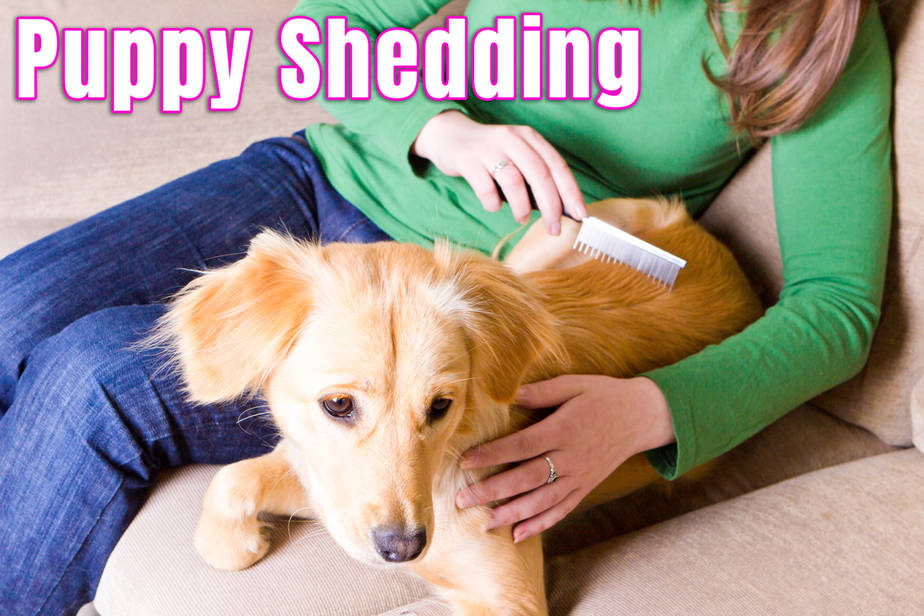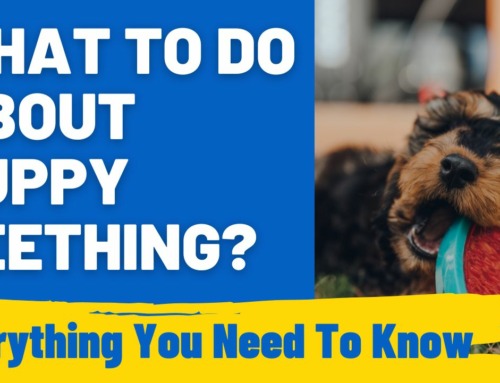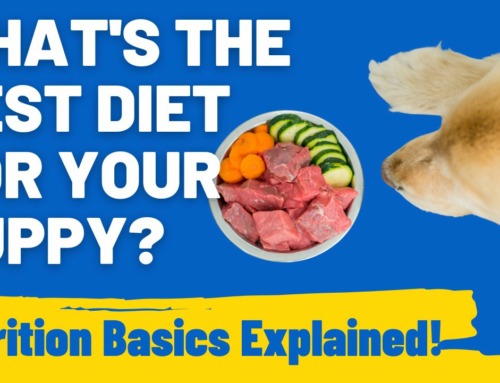Puppies often don’t shed when we first bring them home, especially at a young age, because they’re just growing their first set of fur ever. This might make it seem like a surprise when they start to lose their puppy coat.
We cover the ins and outs of normal puppy shedding, what you can expect when your puppy is shedding, and how to help minimize the loose fur that is flying off your pup and into your life.
When do puppies start shedding?
After a puppy is 4-5 months old, they begin to lose their baby coat and will shed almost all of their fur in a short period of time as they grow a new coat. Young puppies won’t usually shed, since they are still growing their first coat.
If you bring your puppy home at 8-10 weeks of age, it will be a few months before you notice any significant shedding occur.
You likely won’t notice them shedding much before they are around 4-months-old, although there will still be minor shedding.
Puppy shedding is normal – it’s all a part of being a dog!
Even breeds that aren’t typically known for shedding their coat, such as a Poodle, will still shed the occasional hair. This is the same as us humans!
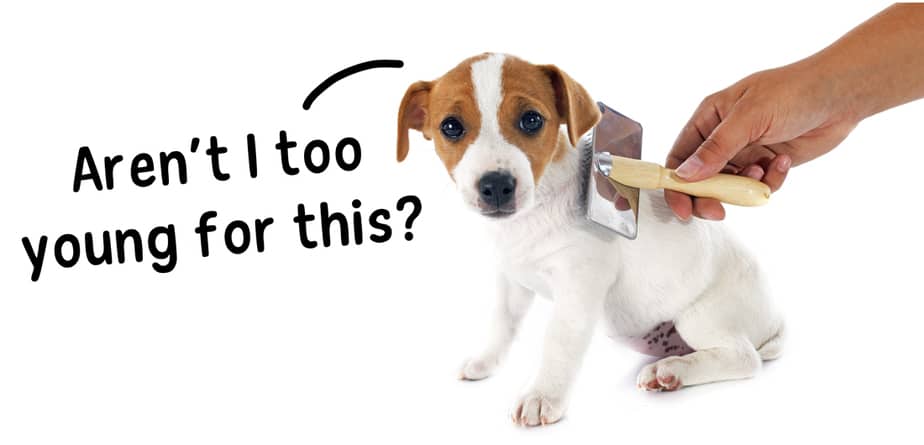
After your puppy is 4-5 months old, their shedding will be more consistent throughout their life.
There will likely never be a point where you don’t notice your dog shedding, except right after a complete de-shedding treatment, if your dog has fur and not hair.
Occasionally, your puppy may not start to shed heavily until they reach 9-10 months of age. Some of this has to do with the changing seasons, since the twice a year blowing of coat is affected by daylight.
Depending on when your puppy was born, as well as their individual genetics, you shouldn’t worry if you haven’t seen too much shedding until 9-10 months of age.
The shedding will come – and it won’t stop – so enjoy this time of minimal shedding!
Difference between hair and fur
Dogs with hair, such as Poodles and Maltese, tend to continually grow their hair with minimal shedding. Dogs that have fur, such as Labrador Retrievers and Border Collies, will always be shedding as they replace old pieces of fur with new ones.
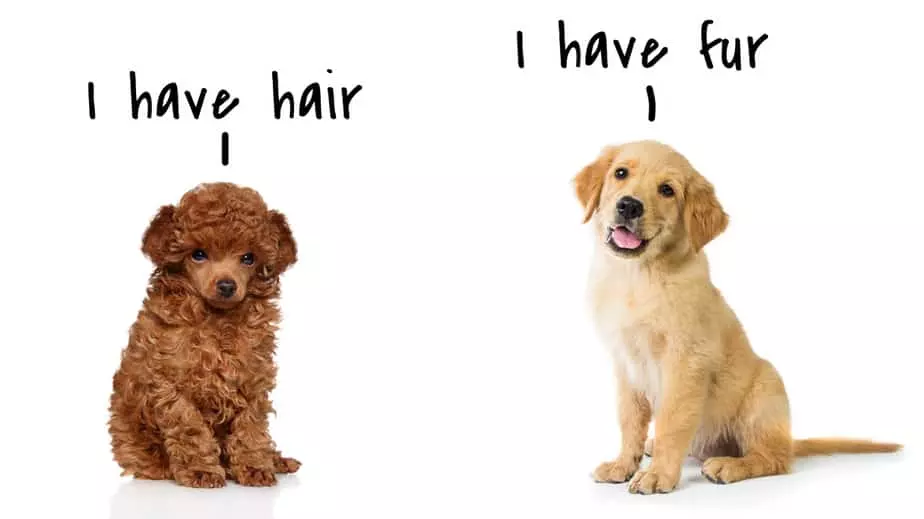
Are you interested in this: Puppy’s First Cut, How old should they be?
Shedding and Color Changes
Will my dog change color? Dogs can change colors as they mature – some breeds go through drastic changes, while others only change to a different shade of the color they had when they were born. This often occurs during periods of shedding, as a new coat replaces the old.
In some dog breeds, their coat changes during the first few weeks of their life as they grow their initial coat.
One of these breeds is the Dalmatian. They are born white, and develop their spots over the first two to three weeks of their life.
Another breed, the Soft Coated Wheaten Terrier, is born a dark brown or black. Their coat changes to their final, light brown, “Wheaten” color by the time they are around a year old.
Not all dogs change colors this drastically, but in general, nothing is set in stone until your dog is a year or two old and has their adult coat.
Coat colors may continue to change with age, too, as an older dog gains gray hairs or experiences other changes.
My first dog, Mya, was a cross between a Labrador Retriever and an English Springer Spaniel.
When she was first born, she had a light yellow coat. Around 1-2 years of age, her fur darkened to a deep red color, along with white patches on her chest and toes.
However, as she continued to age, she lightened again until she was a very light yellow – almost a white – over her entire body when she passed away at age thirteen.
Even her nose changed color, from a black nose as a puppy to a brown nose as an adult!
In short, it’s perfectly normal for your puppy’s hair to change color over the first 1-2 years of their life.
What to expect
Knowing the genetics of your dog can help give you a better expectation of the final coat color, though.
Many responsible breeders will be aware of the genes for color that your puppy carries, or at least the possibility based upon the parents’ genetics.
Even if you have a mixed breed dog, though, you can have a genetic test done for the fun of it to learn more about your dog.
Some options, such as the Embark test, can also determine the breeds in your dog’s ancestry as well as let you know if your dog is at risk for a variety of health concerns.
There are also genetic markers that can help you determine if your puppy will have a long coat or not.
This can be especially useful as you prepare to groom your puppy for the rest of their life. If they will have long fur, it’s important to get them used to clippers and things that will be necessary to groom them in the future.
This Shedding Seems Excessive!
If you’ve been used to your puppy not shedding, it can seem to be a crazy amount of hair! This is especially true if your puppy is “blowing their coat” – the couple of weeks where they replace all their fur in the spring and fall.
The best thing you can do during this time is keep your dog well-groomed.
What you need to do to groom your puppy depends heavily on the type of coat that they have.
It’s best to talk to a professional groomer for some advice on the types of brushes that are best for your individual puppy’s coat, as well as how much brushing you need to do to keep their coat healthy.
Short haired dogs often don’t need much brushing other than once or twice a week to remove excess dead hair. During times of excessive shedding, daily brushing will help keep the fur under control.
Breeds that are considered short haired shedding dogs often include Labrador Retrievers, Rottweilers, Boxers, Boston Terriers, and other dogs with a similar type of coat.
There are many other breeds with longer fur that will still shed plenty, though!
My two current personal dogs are Nova Scotia Duck Tolling Retrievers. They require regular brushing to prevent mats from forming behind their ears, under their elbows, or in other places on their body due to their longer fur.
They also need more regular brushing to maintain their coat when shedding. Due to the longer hair, it can become impacted and have a difficult time falling out on its own when they are shedding even more than usual.
This is the case for plenty of other breeds too, such as a Golden Retriever, Border Collie, or Australian Shepherd.
Any dog with fur long enough to tangle will get mats when they aren’t brushed regularly and properly.
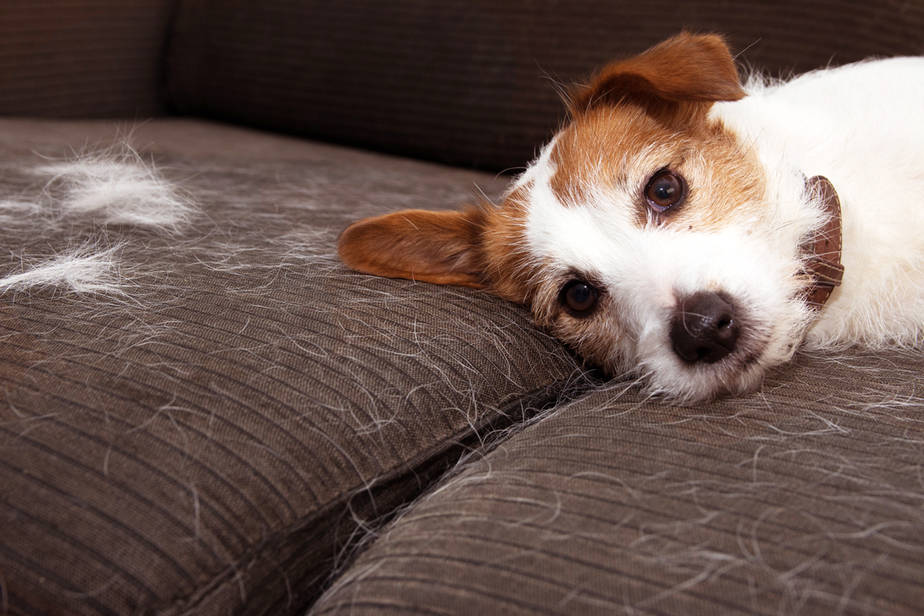
How to Get Rid of Excessively Shedding Fur
When it seems like you are brushing and brushing your dog and just not getting any wear, it’s time to take a new approach.
You might need additional tools, or you might need to take another approach entirely.
In most cases, a bath will help loosen the excess fur from your dog. Massaging your hands, shampoo, and water throughout the coat will make it easier to brush your dog effectively.
An easy tip that I was given for my personal dogs from a professional groomer is to wash your dogs twice! This means you will shampoo, rinse, and then shampoo and rinse again.
You’ll have a much better outcome when you attempt to remove excess hair from your dog’s coat afterwards.
Tools and equipment
Another excellent way to remove fur from your dog is to dry them with a blow dryer, rather than just using a towel or letting them air dry.
Blow dryers designed for dogs have a powerful blast of air that can send all the loose coat flying, without the work of brushing them!
If you don’t want to invest in a blow dryer, it is well worth the money to take your dog to a professional groomer a couple of times a year to get your dog the best de-shed possible.
Sometimes, pet stores or boarding facilities may also have a place to bathe and dry your dog with professional equipment for a small fee.
Finally, after bathing and drying your dog, it’s time to finish by brushing out any extra fur that is left.
If you haven’t been maintaining your dog’s coat, they may need more brushing than usual to remove hair that is stuck close to their skin and couldn’t be loosened with a blow-dryer.
The best type of brush will depend on your dog’s coat. For some dogs, a rubber curry brush is an excellent choice.
Other dogs will benefit the most from a slicker or pin brush, especially if they have longer fur.
A professional groomer who has seen your dog in person is often the best resource for determining the types of brushes that will be most effective.
In general, you don’t need a brush that has long pins or bristles for a short coated dog, like a French Bulldog.
Instead, you’ll want a soft brush, or a rubber brush, or a shedding blade type tool.
Dogs with longer coats can benefit from some of these brushes too, but they will also need another type of brush that has longer bristles to reach all the way to your dog’s skin.
A metal comb, a slicker brush, and a pin brush are all options that may be useful on a longer coated dog, like a German Shepherd or Golden Retriever.
Whatever type of brush is best, you’ll love how much less your dog sheds after a move involved grooming process such as this one!
Household Tips for Managing Shedding
Besides managing the amount of hair that comes off of your puppy, you can also implement cleaning and other household protocols that help you see less hair in your home.
If you are the owner of a dog that sheds regularly, it’s important to invest in a high-quality vacuum cleaner that is designed to handle plenty of hair. You’ll be using it frequently!
In addition, consider changing the way you wash blankets and clothes to remove more hair in the washing process.
There are several dryer ball type items that can help remove hair, including some that go in the washing machine, too.
Regardless of if you’re using these items, tossing your clothes or blankets into the dryer for 10 minutes before you put them in the wash can loosen up hair that can then be removed in the washing machine.
After washing, run them through the dryer again. Sometimes it may take 2-3 cycles for blankets that are heavily covered with hair.
Most of the dog hair should end up in the dryer’s lint trap, so you can evaluate how well the process is working.
Finally, you may also want to invest in a brush that is designed to remove hair from upholstery or clothing. Sticky lint rollers only last so long, so a reusable brush that is effective can be a great purchase.
You can also use this type of brush to remove any clumps of hair that have collected on your blankets after spending time in the dryer. Most of the time, hair that isn’t removed through the washing process described above will collect itself into a ball of fur that can be cleaned more easily.
If you wash blankets, clothes, and other items on a regular basis, you’ll also avoid a buildup of hair that is difficult to remove.
Staying on top of the shedding, both by grooming your dog and changing some of the ways you maintain your home, can help you avoid feeling overwhelmed when your puppy starts shedding.

